If you'd like to turn over a creative leaf this fall, our first September digest has plenty of suggestions. We're spotlighting programs on visual arts, architecture, and writing, as well as the bountiful autumn schedule of courses and workshops in Smithsonian Associates' studio arts program. And there's no better time to become part of our popular World Art History Certificate program, which provides a flexible, personalized approach to expanding your knowledge and appreciation of art.
They're among the offerings designed to make sure you continue to enjoy what you've come to value from Smithsonian Associates: programs and experiences that are entertaining, informative, eclectic, and insightful.
Revealing Portraits
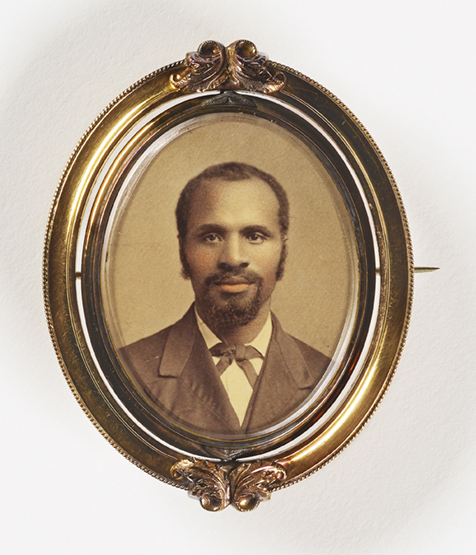 Unidentified artist, Untitled (brooch, man with goatee), undated, albumen print in metal setting. Smithsonian American Art Museum, the L. J. West Collection of Photographic Jewelry, museum purchase made possible through the Franz H. and Luisita L. Denghausen Endowment.
Unidentified artist, Untitled (brooch, man with goatee), undated, albumen print in metal setting. Smithsonian American Art Museum, the L. J. West Collection of Photographic Jewelry, museum purchase made possible through the Franz H. and Luisita L. Denghausen Endowment.
The Smithsonian American Art Museum has acquired a collection of objects related to early American photography from the collector Larry J. West that transforms the museum's photography holdings. The L.J. West Collection includes 286 objects from the 1840s to about 1925 in three groupings: works by early African American daguerreotypists James P. Ball, Glenalvin Goodridge, and Augustus Washington; early photographs of diverse portrait subjects and objects related to abolitionists, the Underground Railroad, and the role of women entrepreneurs in it; and photographic jewelry that represents the bridge between miniature painting and early cased photography such as daguerreotypes, ambrotypes, and tintypes.
With this purchase, the museum now holds the largest collection of daguerreotypes by Ball, Goodridge, and Washington and establishes itself as a center for research and new scholarship in this field. "The acquisition of Larry West's incredible collection enhances and deepens the museum's photography collection and positions us to tell important American stories," says photography curator John Jacob. "The near absence of diverse portrait sitters and non-white photographers from many early American photography collections, including SAAM's, is ahistorical. Significantly, SAAM now can show an inclusive history of photography, with African Americans among its earliest practitioners, conveying to viewers their contributions as innovators and entrepreneurs." Smithsonian magazine offers more details on the collection and its significance, as well as a gallery of compelling portraits.
Photographers interested in self-portraiture can get a practical grounding in a two-part Smithsonian Associates Streaming studio arts workshop on Saturday, November 13 and 20. Art historian and photographer Patricia Howard examines self-portraits by artists including Man Ray, Vivian Maier, Andy Warhol, and Cindy Sherman to reveal how they reflect the artists' personalities, lives, and photographic styles. Participants then experiment with approach and techniques as they create their own expressive self-portraits.
Register for the Program
Reconstructing an Icon
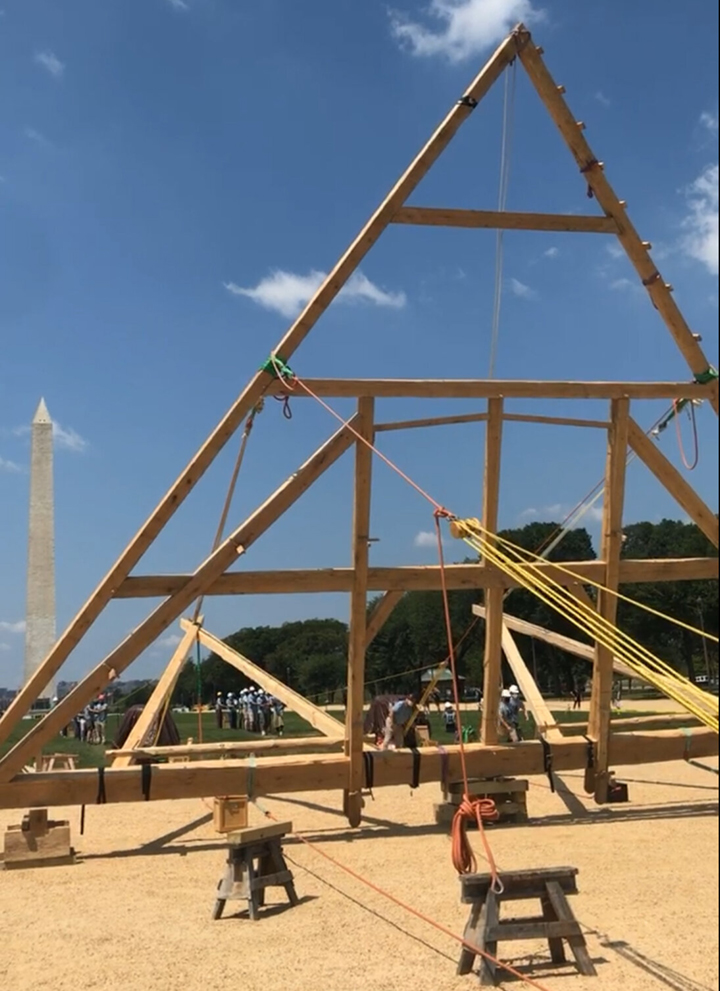 A reconstruction of Truss #6 from Notre Dame de Paris, built in a project by Handshouse Studios, was raised on the National Mall in early August.
A reconstruction of Truss #6 from Notre Dame de Paris, built in a project by Handshouse Studios, was raised on the National Mall in early August.
The devastating fire that engulfed Notre Dame Cathedral in April 2019 destroyed beloved parts of that iconic structure, including the timber roof framework and crossing spire. But other crucial elements-notably the 13th-century stone vaults and flying-buttress support system-survived miraculously intact. Restoration is proving to be a long, complicated, and delicate process as French officials, preservation specialists, structural engineers, and art and architectural historians decide how to rebuild.
In a Tuesday, September 14 Smithsonian Associates Streaming program, art historian Judy Scott Feldman highlights Notre Dame's history and the ongoing restoration and historic preservation decision-making to restore it to its pre-fire condition. She also looks at the unique role of Notre Dame in the historical and cultural legacy of Paris-and all France-and how the cathedral survived threats to its survival in the past.
This summer, Massachusetts-based Handshouse Studio reconstructed one of the oldest trusses that once held the roof of Notre Dame de Paris. Using the materials and methods of medieval builders-and official drawings created by the French restoration effort's lead architects-a team of traditional timber framers, carpenters, faculty, and students from around the country participated in the full-scale reconstruction of Truss #6, one of the original trusses that stood above the choir.
Built in a 10-day workshop at Catholic University of America, the truss was hand-raised for public display in front of the Basilica of the National Shrine of the Immaculate Conception on the Catholic University campus, on the National Mall, and is now on view in the National Building Museum's Great Hall through September 6. Handshouse Studio's founders Rick and Laura Brown hope to share the Truss #6 reconstruction as a gift to France and the collective effort to rebuild Notre Dame.
Register for the Program
Writing Into Art
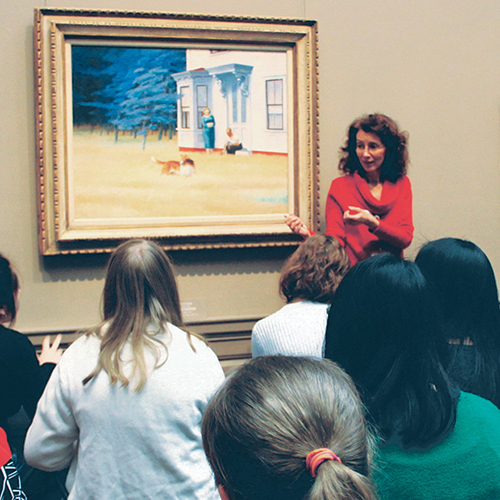 Mary Hall Surface in front of Edward Hopper's 1939 painting "Cape Cod Evening", National Gallery of Art
Mary Hall Surface in front of Edward Hopper's 1939 painting "Cape Cod Evening", National Gallery of Art
Discover how visual art can inspire creative writing and how writing can offer a powerful way to experience art. Join Mary Hall Surface, the founding instructor of the National Gallery of Art’s popular Writing Salon, for a series of Smithsonian Associates Streaming workshops on Tuesday, November 2, 9, and 16 that explore essential elements of writing and styles through close looking, word-sketching, and imaginative response to prompts. The sessions spotlight a diverse range of visual art chosen to inspire writers of all experience levels to deepen their process and practice.
Surface also guides a reflective writing workshop on Thursday, October 14 that finds inspiration in works of art by Hudson River landscape painter Jasper Francis Cropse and poetry by Mary Oliver to explore the lessons that the season of autumn offers us when we slow down, look closely, and reflect.
Write Into Art
Autumn's Harvest
Unleash Your Creativity!
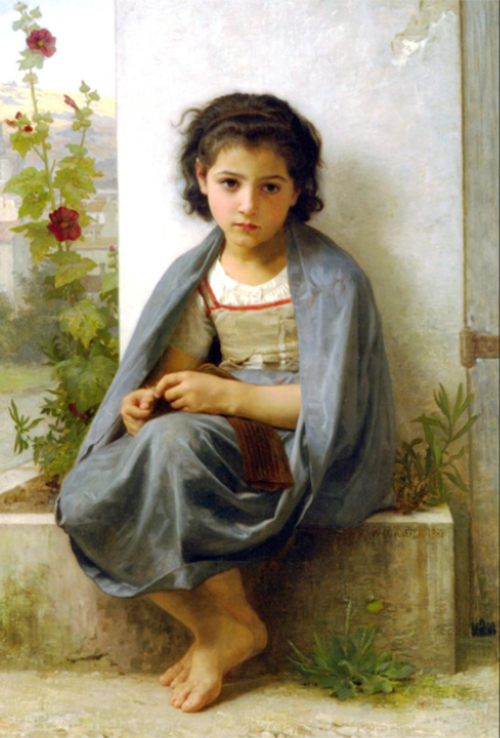 "The Little Knitter" by William-Adolphe Bouguereau, 1882
"The Little Knitter" by William-Adolphe Bouguereau, 1882
Longing to tap into-or reconnect with-your artistic side? Smithsonian Associates' studio art courses and workshops are the perfect way to add more color and creativity to your life. With more than 80 professionally led offerings scheduled throughout the fall, you're sure to find something to spark your imagination. There's a whole gallery of choices ranging from fiber arts to calligraphy, drawing to mosaics, watercolor to collage-and an extensive range of photography-focused classes.
Specialized topics are also part of the mix. Try your hand at botanical sketching or get an introduction to scientific illustration. Craft unique non-traditional holiday ornaments. Learn how to grow show orchids or hone your skills in building effective Instagram content for artists and entrepreneurs. You can even explore traditional French oil painting techniques from the 17th and 18th centuries.
The majority of programs are offered on the Smithsonian Associates Streaming platform, but in-person fall classes take you on location as you draw some of Washington's landmarks, create Cezanne-inspired pastels at the National Arboretum, and capture the seasonal beauty of Rock Creek Park in oil landscape paintings.
Browse Our Studio Arts Classes
The Prolific Mr. Wright
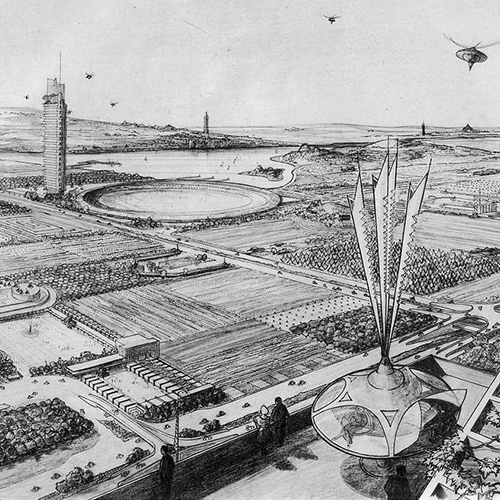 Broadacre City project drawing by Frank Lloyd Wright (Photo: Kjell Olsen / CC license 2.0)
Broadacre City project drawing by Frank Lloyd Wright (Photo: Kjell Olsen / CC license 2.0)
More than six decades after his death, the architectural legacy and creative philosophy of Frank Lloyd Wright continue to compel us. Two upcoming Smithsonian Associates Streaming programs offer insights into aspects of this uniquely American figure.
In the 1930s, Wright began to envision a future centered on the automobile, telephone and radio, and mass production, integrated to bring mobility, freedom, and choice to the individual. Congested, noisy, and crime-ridden cities would disperse into the countryside, spread out, and essentially disappear. He created a traveling exhibition featuring a large model of such a city of the future, christened Broadacre City, and throughout the remainder of his life he continued to develop concepts expressed in it.
Broadacre City went unrealized, but Wright never abandoned the city as architectural canvas. He habitually conceived both stand-alone city buildings and urban-center developments-most of which remained only ideas on paper-throughout his working career. On Tuesday, September 7, Bill Keene, a lecturer in architecture and urban studies, examines the apparent contradictions between Wright's essentially anti-city views and his ongoing fascination with work to enhance urban life.
The home Frank Lloyd Wright designed for Buffalo businessman Darwin D. Martin and his family between 1903 and 1905 is considered one of the most substantial and highly developed of the architect's Prairie-style houses and one his most significant early commissions. The six historic structures on the 1.5-acre estate have been completely restored after decades of extensive reconstruction and restoration that began in 1997. Mary Roberts, executive director of the Martin House, leads a live virtual tour through the first floor of the main house, the open-air pergola, and conservatory as she shares the fascinating history of the site. Curator Susana Tejada joins the program for the Q&A session. It's the ideal introduction to this architectural gem-and might spark your own visit.
Wright's Urban Visions
The Martin House